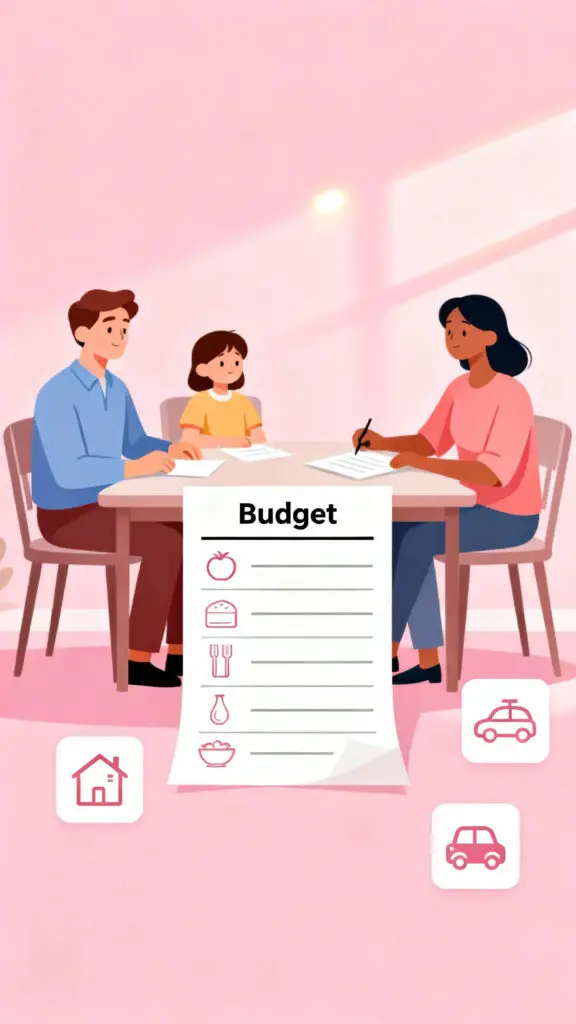Carrying debt when you’re broke can feel burdening, especially when you have to deal with pending bills and other expenses that keep you in the unending loop of earning and spending. Paying off debt is not about having extra money or waiting for extra income to take any action, it’s about building a plan, strategizing, and staying consistent throughout the process. Even small and intentional steps can reduce stress, stop debt from growing, and help you slowly pay it off through consistent and intended actions. This article will help you explore ways to pay off debt even when you’re broke, leading you towards financial independence and a secure and stable financial future.

Stop Adding New Debt
When paying off a debt, an important step is to stop adding new debt to the already financially demanding situation. Stopping new debt doesn’t mean your life has to become miserable, it just means that you need to become more intentional and mindful with where your money goes.
It’s important to realize that using credit cards, buy now pay later options, and emotional spending can make your budget fall apart more than anything, making it important to consider the option of pausing these spending habits. Instead, try spending through debit cards or cash, allowing you to move forward and leaving behind the unending loophole of falling into debt.
Get Clear About What You Owe
The next step is to get clear about what you owe, including balances, minimum payments, and interest rates. Seeing the numbers can become intimidating and overwhelming at first, but it’s important to look at the positive side of this step that it brings along clarity and awareness, giving you a number to begin with.
Instead of wondering and living in fear, this step makes it easy by turning your problem into a written form. This step also helps you make informed decisions instead of relying on guesswork, making it a considerable step when working with paying off debt.
Focus on Minimum Payments First
When money is extremely limited, the first priority is not to pay off debts, it’s to focus on stability and security. If you’re living paycheck to paycheck, your debt repayments can begin with minimum payments first that can help you avoid late fees, penalties, and additional stress.
A smarter approach would be to direct any extra money towards something much more meaningful like savings or paying off debt while continuing minimum payments on the rest. This small yet thoughtful effort can help you see results over time, reminding you that those seemingly small but intentional efforts can serve you in the long run too.
Pick One Debt to Pay Off First

Trying to pay off all your debts at once can feel exhausting and intimidating which is exactly why it is important to choose one debt at a time and focus on paying it off. It can either be the one with the smallest balance or the one with the highest interest.
Focusing on one debt can help you become more motivated and consistent, allowing you to build progress around one debt at a time. Small wins matter because even when you’re broke they remind you that simple but intentional actions can lead to meaningful results over time.
Cut Small Expenses Without Stress
Paying off debt doesn’t mean restricting your wants and making the whole process feel like a punishment, it’s more about looking for small but meaningful steps that allow you to manage all your expenses with balance. However, you can look for small and manageable cuts in your spendings, such as impulse shopping, frequent takeouts, or unused subscriptions.
These changes may not seem significant, but over time, you may come to realize how much much you allow yourself to save simply by being more intentional and mindful towards the money you work so hard for. The key is to realize that you don’t need to cut every non-essential expense off, you just need to be smart and make decisions that benefit your financial life.
Use Extra or Unexpected Money Wisely
Another helpful way to pay off debt is to use extra or unexpected money wisely, instead of spending it on unnecessary expenses. Extra money such as tax refunds, gifts, side income, or bonuses can be a great way of paying off debt, if spent intentionally and smartly.
It can be tempting to spend emotionally, buy new clothes, or go out for fancy dinners, but the truth is that these temporary sources of happiness are some of the biggest financial leaks that keep you stuck in the unending loop of financial dependence. Instead of spending your money on these expenses, a smarter approach would be to direct your money towards paying off debt.
Ask for Lower Interest or Payment Help
Many people do not realize that creditors are often willing to work with you. All you have to do is call them and ask for lower interest rates, waived fees, or flexible payment plans.
This does not mean you have failed, it simply means that you are taking responsibility. Even a small reduction in interest can save money and make payments more manageable. It is important to remember that asking for help is not a sign of weakness, it shows that you can make smarter financial choices and handle them with responsibility.
Increase Income in Simple, Realistic Ways
Relying on a single income when trying to pay off debt can become difficult, especially when your current income isn’t enough and you have to live paycheck to paycheck. A smarter move would be to consider any side hustle such as pet sitting, babysitting, freelancing through freelancing platforms such as Fiverr, Upwork, or freelancer.com, or combining passion with income through baking, cooking, painting, or selling handmade crafts.
The goal is not to burden yourself but to earn extra cash that can help you pay off your debt fast, allowing you to increase your income and slowly become debt free.
Build a Small Emergency Cushion

Trying to pay off debt without any savings can be risky because even a small unexpected expense can push you back into borrowing again. A medical bill, car repair, or sudden household expense can undo months of effort if you have no backup money and that is why building a small emergency cushion is important, even if it feels slow.
You do not need a large amount, even saving $100 to $300 can make a big difference. This small buffer gives you peace of mind and protects you from falling back into debt, helping you stay consistent with your repayment plan.
Track Progress to Stay Motivated
When you are broke, debt payoff can feel slow and discouraging, especially if you do not see visible results right away. Tracking your progress helps you stay motivated during tough months. You can write down your balances, use a simple notebook, or track changes monthly on your phone.
Watching the numbers slowly go down reminds you that your efforts matter, even if progress feels small. This habit helps turn patience into motivation and keeps you focused on your long-term goal instead of short-term struggles. Seeing progress makes it easier to keep going when things feel hard.
Be Patient and Forgiving With Yourself
Paying off debt is not a straight path, especially when you are living paycheck to paycheck. There may be months when you cannot pay extra or when unexpected expenses slow you down. This does not mean you have failed. Being patient and forgiving with yourself helps you stay consistent instead of giving up.
Debt often builds over years, so it is unrealistic to expect it to disappear overnight. What matters most is continuing to show up and making intentional choices whenever you can. Progress is made through consistency, not perfection, and every small effort counts.
Redefine What Financial Success Looks Like
While paying off debt, financial success may not look glamorous or exciting, but it is deeply meaningful. Success during this phase means being mindful with money, avoiding unnecessary spending, and choosing long-term stability over short-term comfort. It may mean saying no to certain things now so you can say yes to peace later.
Living simply while working toward debt freedom is not failure, it is strength and discipline. Redefining success helps you stay proud of your journey, even when life feels restricted, and reminds you that you are building a more secure future step by step.
Conclusion
Paying off debt when you are broke is challenging, but it is absolutely possible with the right mindset and consistent effort. You do not need extra money to start, you need intention, patience, and a clear plan. By stopping new debt, managing expenses wisely, focusing on one step at a time, and staying kind to yourself, you can slowly break free from the cycle of financial stress. Every small action adds up over time, even when progress feels slow. Remember, debt freedom is not achieved overnight, but through steady and thoughtful decisions that lead you toward stability, independence, and peace of mind.












